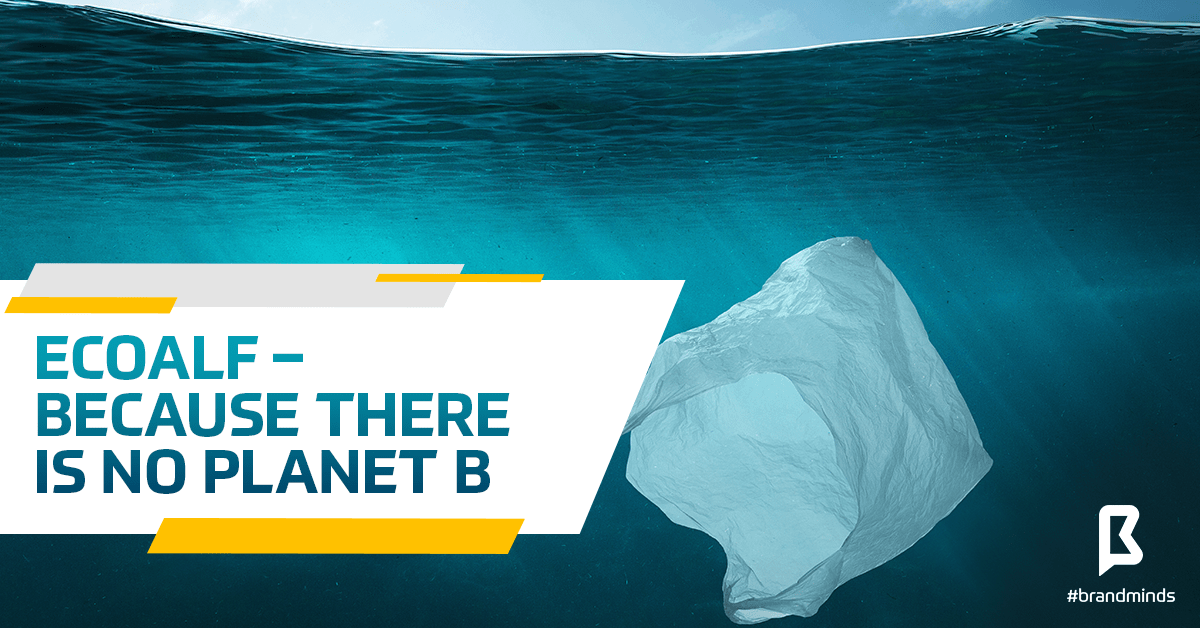The first luxury brand to sign a sustainability deal
Could this deal signal a shift towards a greener luxury fashion industry?
Certified B Corporations – Using Business as a Force for Good
Certified B Corporations are a new type of businesses – they are using business as a force for good.
If you are looking for a way to prepare your business for the future, this article is for you.
Our failures are a painful but necessary teacher
The business landscape has a major influence on our world today. It is no longer acceptable to make money at any cost because it inevitably leads to an economic downturn. The latest example is the financial crisis which began in the USA in 2007 and lasted until 2009. We know now that selfish and greedy capitalism caused this recession with consequences felt worldwide. The housing industry collapsed, many Americans lost their homes and their jobs, over 230,000 U.S. businesses closed, the construction and manufacturing industries experienced double-digit losses in employment and European economies overall contracted.
The present is changing
The business environment encouraged and awarded a dog-eat-dog mentality among employees where there were no teams, but individuals competing with each other; where everyone had their own agenda and used all means necessary to come on top; where companies and corporations were looking to maximize profits by any means; where the interests of their shareholders came before the interests of their customers; where employees were easily replaced and rules were often bent at the expense of ethics and integrity.
What is the impact of your business?
Those days are long gone and fortunately, the business environment has learned its lesson.
We are living in the age of digital connectivity, transparency and instant access to news from all corners of the world.
Corporations and big companies no longer control the conversations around their products or their brand – their customers do.
We’re in the middle of a revolution and the customers are leading the charge. They are looking at the way businesses influence our world – for better or for worse. Is your business bad for the environment? Is your company producing plastic waste which has become a global problem? Are you helping communities to grow and have a better life? How do you treat your workers?
Certified B Corporations – using business as a force for good
In 2006, three friends – Jay Coen Gilbert, Bart Houlahan and Andrew Kassoy – left careers in business and private equity and created an organization dedicated to making it easier for mission-driven companies to protect and improve their positive impact over time – the Certified B Corporation.
Certified B Corporations are businesses that meet the highest standards of verified social and environmental performance, public transparency, and legal accountability to balance profit and purpose.
B Corps are accelerating a global culture shift to redefine success in business and build a more inclusive and sustainable economy.
Here are the main goals of B Corporations:
- Reduce inequality;
- Lower the levels of poverty;
- Create a healthier environment;
- Build stronger communities;
- Create more high-quality jobs with dignity and purpose.
B Corporations use profits and growth as a means to a greater end: positive impact for their employees, communities, and the environment.
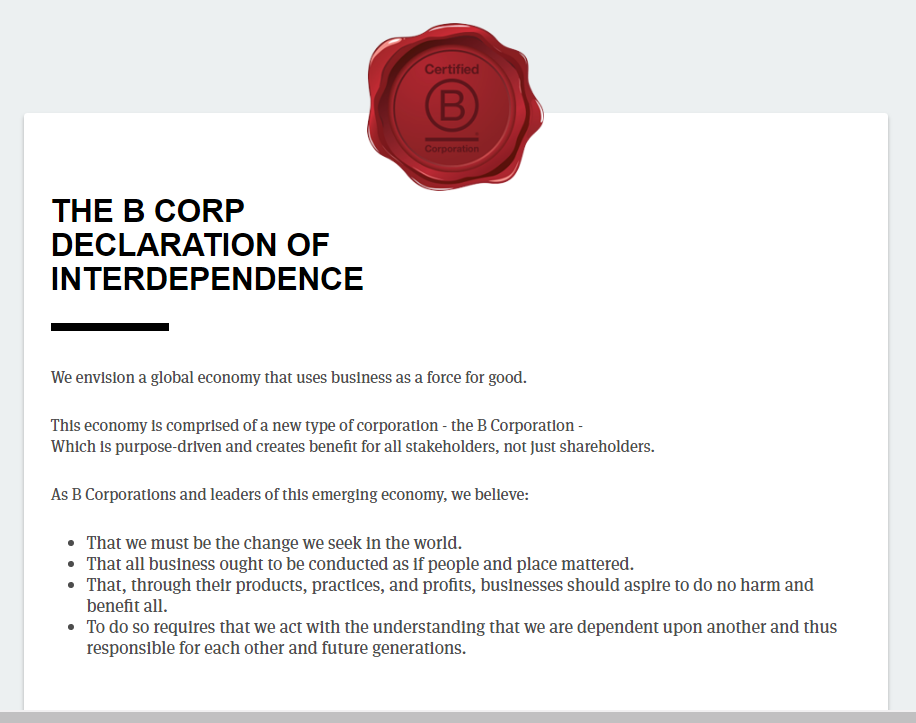
bcorporation.net
A business receives the B Corp Certification if it achieves a minimum verified score on the B Impact Assessment—a rigorous assessment of a company’s impact on its workers, customers, community, and the environment—and make their B Impact Report transparent on bcorporation.net.
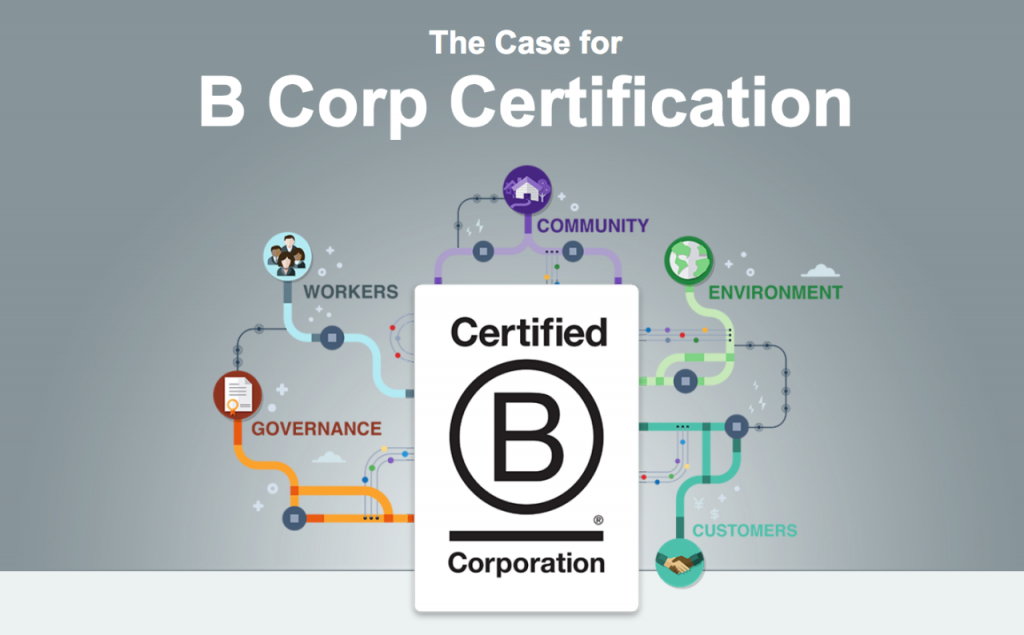
B Corp Facebook Page
Certified B Corporations also amend their legal governing documents to require their board of directors to balance profit and purpose.
There are currently 2788 B Corporations in 150 industries and 64 countries.
Here is how B Corporations stand out from other companies:
- They are 81% more likely to have transgender-inclusive healthcare coverage;
- The vast majority of B Corp employees are highly satisfied with where they work;
- B Corps are nearly 2x as likely for the majority of their managers to come from underemployed groups;
- They outperform other businesses by 16% on addressing climate change;
- 88% of service-industry B Corps allow flex-time schedules;
- They are 87% more likely to manage greenhouse gas emissions reduction;
- B Corps are 27% more likely to pay all of their hourly workers a living wage.
I first learned about the Certified B Corporation while researching Ecoalf, the first fashion brand in Spain to become a B Corporation. Sustainability is an important topic on BRAND MINDS blog and I addressed it by covering European companies which hold sustainability as one of their core values (you can find them in the Success Stories Series).
The second company I found was Certified B came as a surprise: Once Upon A Farm whose Chief Brand Officer is Hollywood actress Jennifer Garner. You can read about the company here: 3 Successful Businesses Founded by Hollywood Stars.
Here are other prominent B Corps and their overall B Impact score (which can range between 0 and 200):
- Patagonia Works, the leading outdoor apparel company which takes responsibility for their entire supply chain, pushing for just working conditions while protecting the environment (151); learn more about Patagonia in my article When Authenticity is Your Brand’s ….Brand
- Danone UK, North America, Egypt, Iberia and Canada, the food and beverages manufacturer (80);
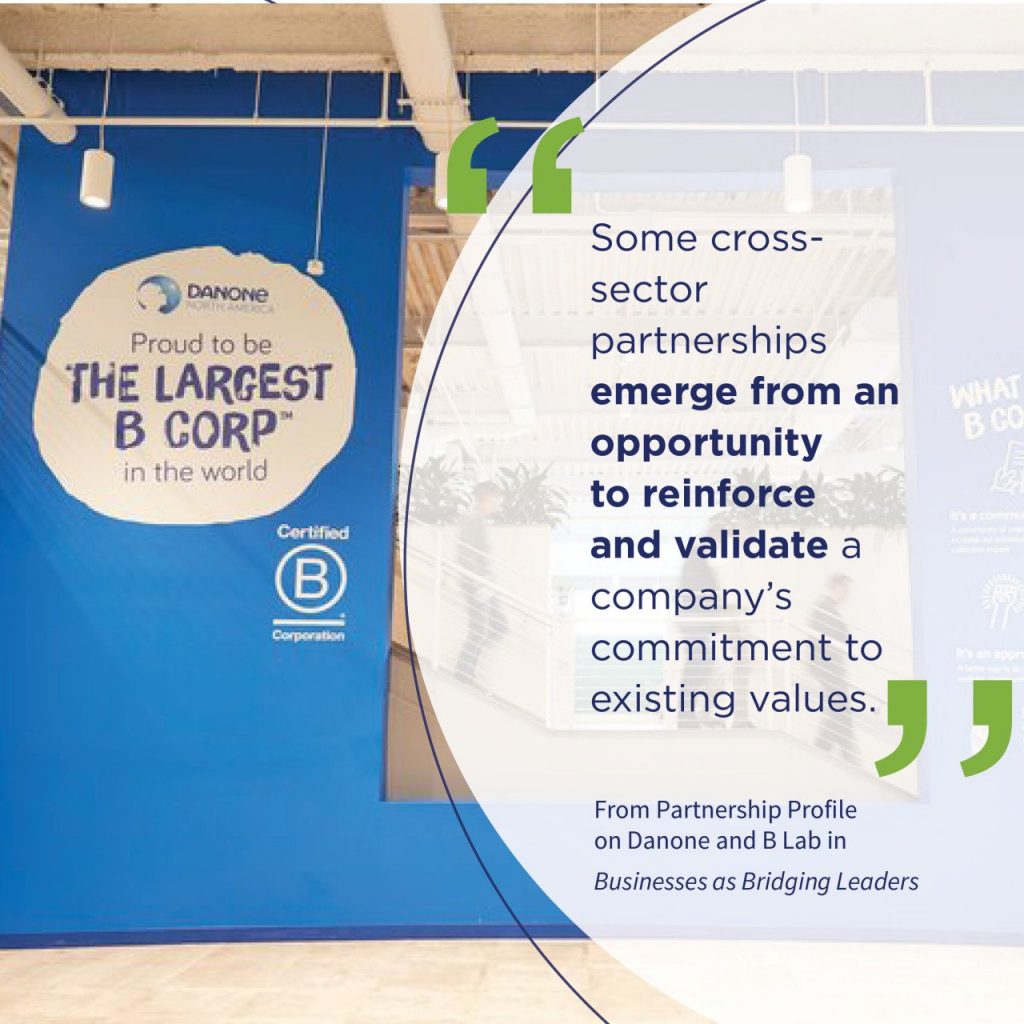
B Corp Facebook Page
- Hootsuite, the social media management platform (85); read Hootsuite: 5 Top Social Media Trends for 2019
- Natura, the Brazilian cosmetics company (120).
Do you want to measure your company’s impact on its workers, community, environment and customers?
Take the free B Impact Assessment!
Join the Conversation
We’d love to hear what you have to say.
Get in touch with us on Facebook Group and Twitter.
Sustainability in Business Means Increased Profitability
Sustainability in business – What is it?
Our Common Future a report published by the United Nations in 1987 defines the sustainable business as “a three-legged stool of people, planet, and profit.”
It essentially means to grow your business in the long term by having a positive effect on the environment and the community.
Business sustainability is not just a fad or a buzzword in the business environment. Each and every CEO needs to become aware of the effect their company – irrespective of size and industry – is having on people and on the planet.
Making money at all costs is no longer viable.
Choosing sustainability – not really a choice, but a mandatory business development
In recent years business reports have identified several megatrends affecting our world and consequently our business environment:
- Climate change threatening supply chains and operations;
- Resource scarcity driving costs up;
- The rise of clean technology and renewable energy;
- New technology creating transparency;
- Rising expectations from customers (especially Millennials);
- Shifting regulatory landscapes and markets.
Consumers have the power
There’s a new factor which customers take into account when deciding which products to buy besides price and convenience: sustainability. They are actively looking for sustainable businesses to buy from and shunning the ones which are not.
According to Nielsen, a whopping 81% of global respondents feel strongly that companies should help improve the environment. The consumers driving this powerful trend can be found across generations but are mainly Millennials, Gen Zers and Gen Xers.
A new era of sustainability is rising, and it’s touching every corner of the world. Consumers in markets big and small are increasingly motivated to be more environmentally conscious and are exercising their power and voice through the products they buy. But why do these shifts feel so urgent? There is mounting evidence to support that in many parts of the world, sustainability has become a life and death matter.
Nielsen
Being sustainable is more profitable
Here are a few benefits of running a sustainable business:
- Decrease in operating costs;
- Improved risk management;
- Innovation drive;
- Build brand value;
- Positive reputation and brand awareness;
- Competitive advantage;
- Attract talent and retain employees.
Companies making sustainability their business
Here are 5 examples of sustainable companies and how they impact our world – people and planet:
- The shipping industry is one of the highest consumers of natural resources with cargo vessels currently consuming up to 4 tons of fuel per hour and producing a huge amount of pollutant emissions; Bound4Blue created the wingsail, an innovative solution to cut-off fuel consumption and decrease pollutant emissions;
- According to statistics, 8 million tonnes of trash end up in the oceans every year and 80% of it is plastic; Spanish fashion brand Ecoalf created the sea yarn, a new 100% recycled filament which is made of the plastic bottle collection found at the bottom of the Mediterranean Sea which is used to create high-quality fashion products;
- In 2018, the global carbon emissions grew to an all-time high with coal being now the biggest single source of global warming. Green energy sources like wind and solar power cannot cover our world’s energy needs by a long shot. That’s where Deep Branch Biotechnology steps in: to turn carbon dioxide (CO2) from a polluter to a producer;
- Founded in 2011, Auticon is the first enterprise to exclusively employ adults on the autism spectrum as IT consultants thus contributing to the decrease of autistic adults’ high rate of unemployment;
- Here’s a different way consumers control which companies get to receive their money: sustainable pensions. A sustainable pension is how Danish people ensure their future is sustainable. With the support of Matter, they invest their hard-earned money in companies producing green energy, new technologies, medicine and health care solutions. These companies have a high standard of ethics and responsible business practices.
The UN Sustainable Development Goals
It’s never too late to make your business sustainable, but if you don’t know where to start, here is my recommendation: the UN Sustainable Development Goals.
In 2015, countries adopted the 2030 Agenda for Sustainable Development which included 17 Sustainable Development Goals:
- No poverty,
- Zero Hunger,
- Good Health and Wellbeing,
- Quality Education,
- Gender Equality,
- Clean Water and Sanitation,
- Affordable and Clean Energy,
- Decent Work and Economic Growth,
- Industry, Innovation & Infrastructure,
- Reduced Inequalities,
- Sustainable Cities and Communities,
- Responsible Consumption and Production,
- Climate Action,
- Life Below Water,
- Life on Land,
- Peace, Justice & Strong Institutions,
- Partnership for the Goals.
These goals call for action by all countries, poor, rich and middle-income to promote prosperity while protecting the planet.
The State of Sustainable Business Survey by BSR provides insight into the world of sustainable business and identifies common perceptions and practices of corporate sustainability professionals.
Which SDGs do companies focus their attention on more?
Here they are:
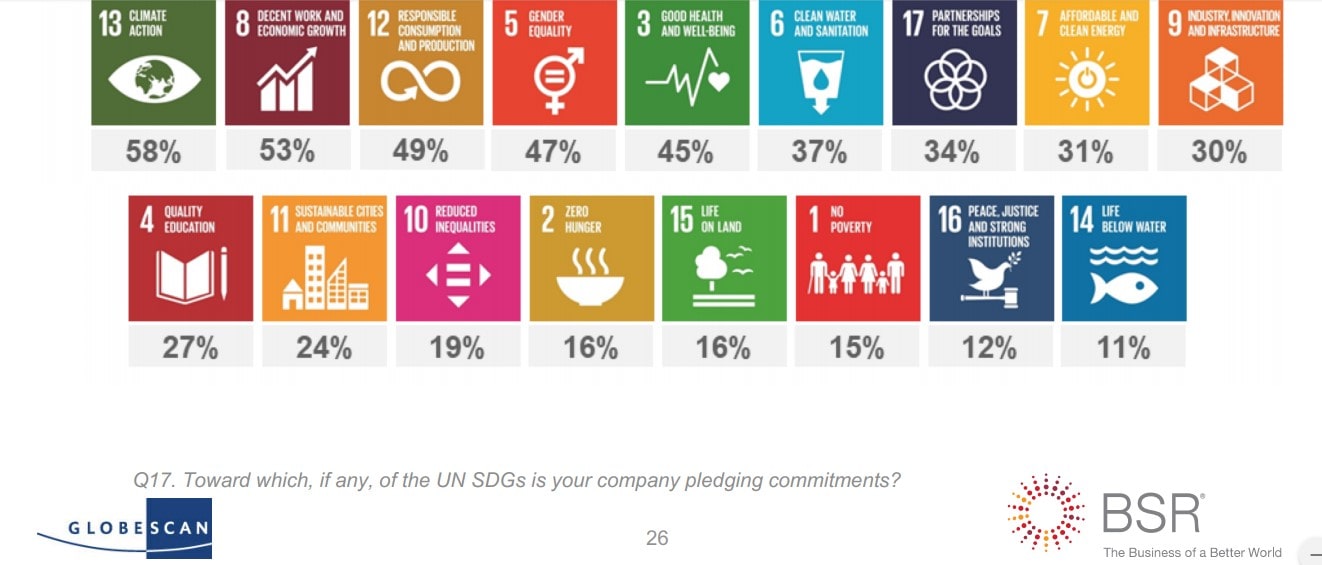
Here are the key findings of the 2018 survey:
- Top priorities for sustainability efforts are corporate integrity, diversity and inclusion, climate change and human rights;
- Disruptive technologies, such as artificial intelligence, concern over data privacy and ownership, and disruptions to climate and energy systems are shaping future business strategies;
- Sustainability needs to be integrated into strategy;
- SDGs are driving strategy;
- Companies have limited focus on value chain impacts;
- There is a need for more cross-functional collaboration;
- There is room to improve communications.
Is your business sustainable?
Do you plan to make your business sustainable in the foreseeable future?
Join the Conversation
We’d love to hear what you have to say.
Get in touch with us on Facebook and Twitter.
Henrik Hagemann (CustoMem) – Cleaning Wastewaters With An Innovative Solution
Cleaning wastewater is essential but challenging. Wastewater operations are inefficient and unsustainable. They require excessive energy consumption, their operating costs are high and they contribute to global warming through generating harmful greenhouse gas emissions. According to reports, global carbon dioxide (CO2) emissions have increased by almost 50% since 1990 (source: wateronline.com).
That’s where Henrik Hagemann, co-founder and CEO at CustoMem wants to make a difference. Together with Ben Reeve and Gabriella Santosa, Henrik founded CustoMem in 2011 with the purpose of designing sustainable solutions to clean wastewaters.

Henrik Hagemann / linkedin.com
Currently, the world is confronted with the following facts: water scarcity is increasing and more than half the world’s population live in urban areas. As you can see, the importance of treating and understanding the value of wastewater has never been greater.
CustoMem designs and manufactures biologically derived materials for industrial water treatment. Through a low-energy, low-cost biological process, CustoMem produces a novel biomaterial composite that can selectively capture micropollutants including pesticides, pharmaceuticals and high-performance chemicals.
To honour his accomplishments, Henrik was included in 2019 Forbes 30 under 30 Europe and in 2018 he received Innovators under 35 Europe (2018) award by MIT Technology Review.
Looking to know more about Henrik, I invited him to share his story.
1. Your company is about protecting global environmental & human health by engineering bio-based materials to capture target chemicals. When did environmental protection become one of your interests?
I’ve grown up on the Danish countryside with my childhood home neighbouring forest and fields on all sides. My favourite pastime was venturing into the forest and exploring our nearby wetlands and river.
This evolved into an environmental curiosity, which resulted in long-distance cycling trips like the Silk Route and now building a venture that exponentially reduces the discharge of high impact industrial chemicals.
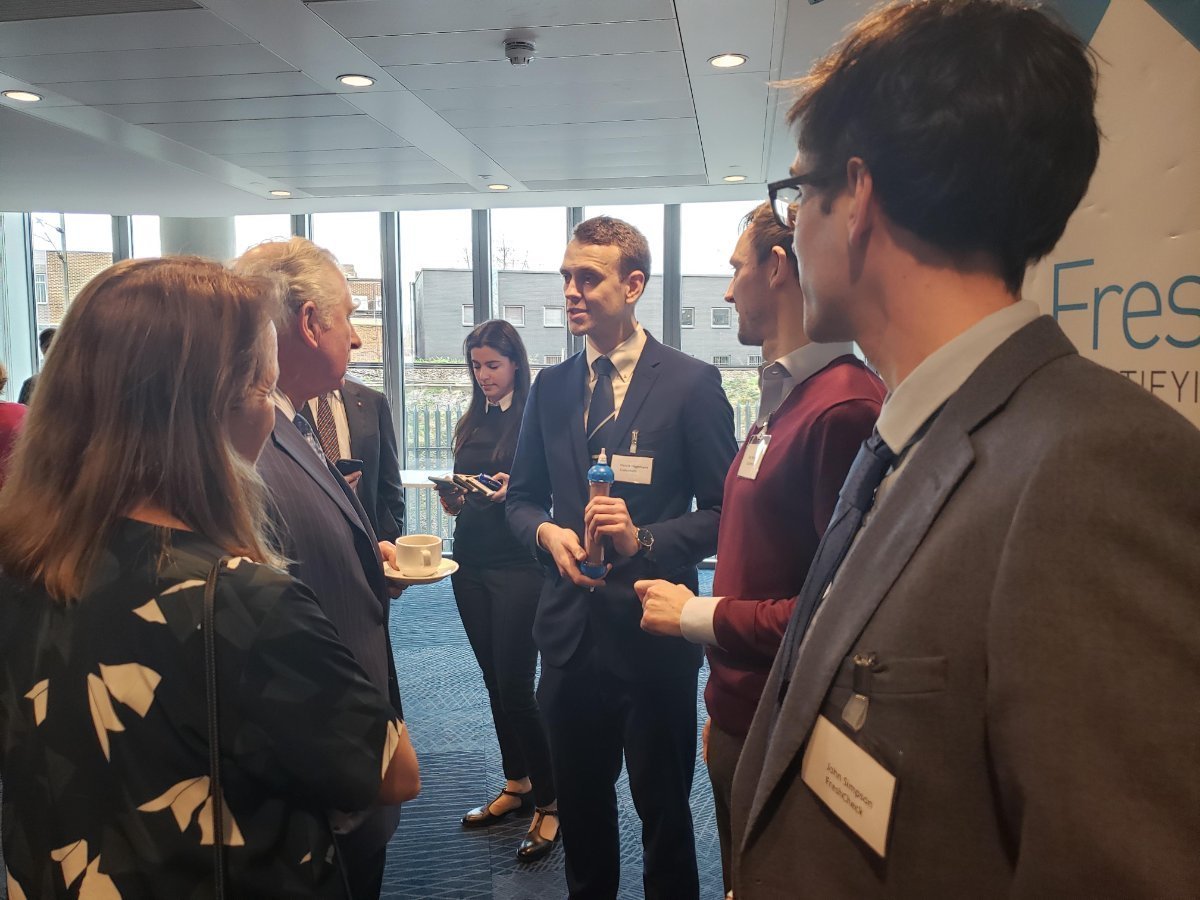
Henrik Hagemann & Ben Reeve sharing about CustoMem Granular Media (CGM) with HRH The Prince of Wales / customem.com
2. What challenges did you encounter while developing the CustoMem adsorbent material?
Huge scientific challenges!
We’re targeting the most resistant industrial chemicals. In the first case, this involves us “sticking” (adsorbing) the most non-stick chemical in the world, fluorinated substances called PFAS. PFAS is what makes Teflon pans non-stick.
Lots of additional challenges appear, including how PFAS contain one of the most stable bonds in the world, come in 4700+ slight variants, require advanced H&S facilities as it is toxic at extremely low quantities and detecting it in one water sample easily costs $350.
Seeing a world-class team come together to tackle such a scientifically hard problem alongside generic startup challenges is truly inspirational. I guess it’s also no wonder more than half of the team have a PhD.

CustoMem wins Technology Business of the Year 2019 at the 6th annual West London Business Award / customem.com
3. What is your vision of the future?
I envision a future where we engineer biomaterials to tackle global challenges with a scalable profitable approach.
As the first step to this vision, my vision is one of CustoMem as the market leading solution for treatment of highly toxic industrial chemicals with guaranteed destruction or closed loop reuse of the chemicals. I want us to effectively demonstrate the business case for protecting environmental and public health.
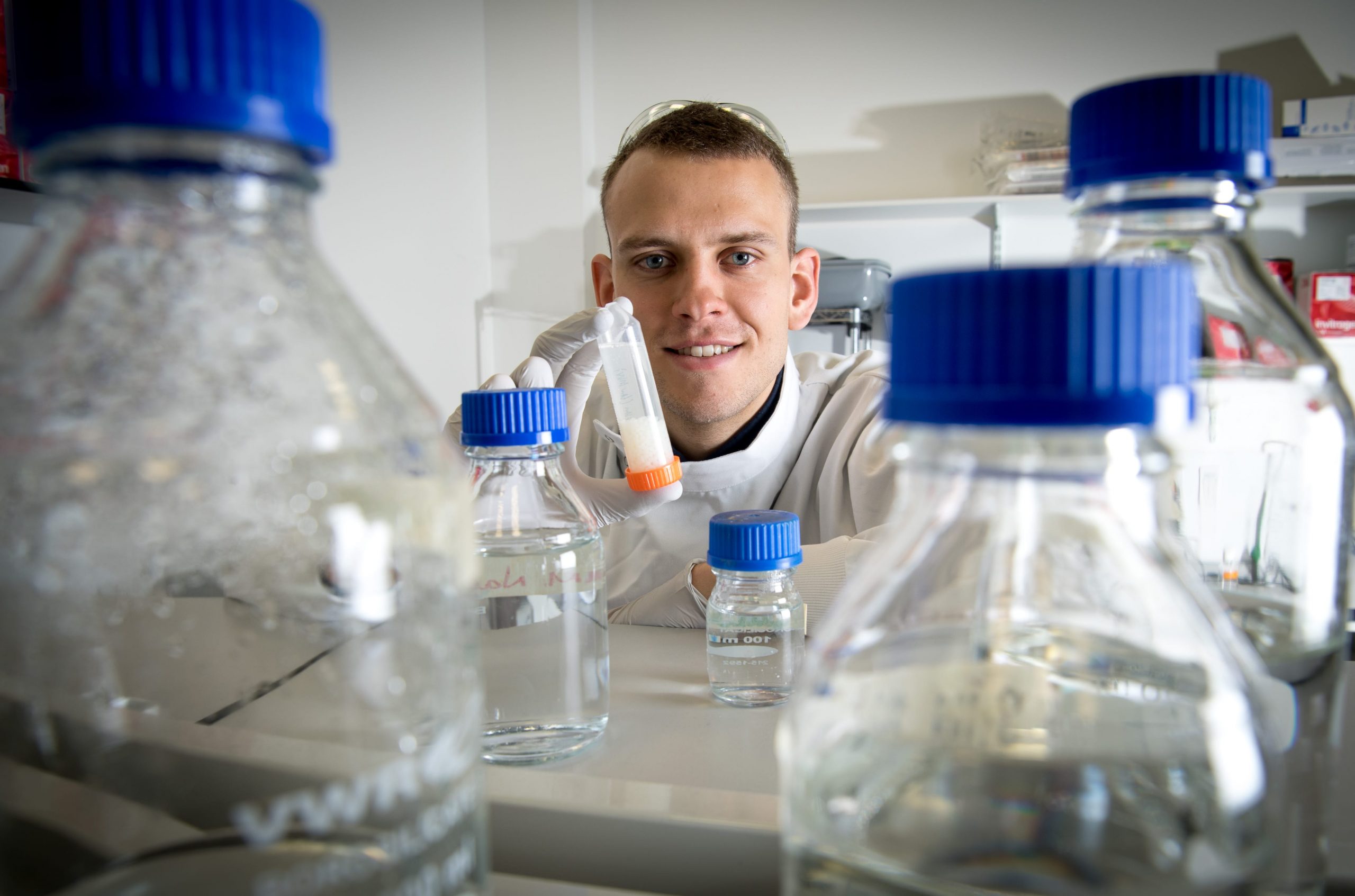
image source: shell-livewire.org
Join the Conversation
We’d love to hear what you have to say.
Get in touch with us on Facebook Group and Twitter.
Cristina Aleixendri Munoz (bound4blue) – Bringing Sustainability To The Shipping Industry

Cristina Aleixendri Munoz is the COO and Co-founder of bound4blue, a Spanish company which is actively working to make the shipping industry more sustainable and eco-friendly.
Forbes 30 under 30 recognized Cristina as one of the most promising young professionals and included her in its 2019 European list.

Cristina Aleixendri Munoz
The shipping industry is one of the highest consumers of natural resources. According to bound4blue, the cargo vessels are currently consuming up to 4 tons of fuel per hour which can represent up to 80% of their operating costs. The industry is also producing an unsustainable amount of pollutant emissions.
The goal of bound4blue is to cut-off fuel consumption to make maritime transport more efficient and sustainable. To this end, the team at bound4blue has designed an innovative foldable wingsail which uses available and free wind power as complementary propulsion for vessels.
bound4blue – Our vision for maritime transport from bound4blue on Vimeo.
It’s a wonderful solution: elegant by design with superior efficiency.
I was curious to know more about Cristina’s work so I invited her to answer a few questions.
Here is the interview:
1. Your company is about providing organizations with clean and sustainable solutions.
When did sustainability become one of your interests?
I would love to say that I have been interested in sustainability since I was really young. The truth is that, although I thought I was aware of it, I must admit that I was “sustainable blinded” until I co-founded bound4blue in 2014.
During all these years I have had the opportunity to meet amazing companies that are also giving a solution to global problems that protect the environment while assuring the financial viability and impacting positively on our society. bound4blue has opened my eyes to my own blindness and made me consider things I had not previously considered before.
Today, we can find solutions to address the global challenges we face. Sustainability is not only part of bound4blue’s DNA but is nowadays also part of my life.

Cristina Aleixendri Munoz, Bertrand Piccard and David Ferrer Desclaux at the Climate Show 2018
2. What challenges did you encounter while building the wingsail system?
bound4blue offers a state-of-the-art technology based on the ancient concept of sailing but using 21st-century technology. The main challenge has been taking existing technology in an advanced form and adapting it to merchant shipping requirements.
It took us a lot of time to design folding and unfolding mechanisms which would strike an optimum balance between its price and the simplicity of the manufacturing process, without compromising safety.

The team at bound4blue
Security was one of the main concerns we had and the main issue we have overcome. We have designed a safe wingsail in harsh weather conditions and power failure. In the event of full power loss, the wingsail is able to fold without power thanks to the systems used to fold/unfold it. Also, the wingsail operational maximum load is selected according to the vessel performances and the expected sailing areas. The system ensures that the maximum operational load is not surpassed by controlling wingsail angle of attack and/or folding the wingsail with our automated control system.
3. Share with us your vision of the future.
I read a few days ago that, in order to sustain our current lifestyles, three planets would be required by 2050. Clearly, we do not have 3 planets to make it. All the choices we make every day have an impact on our planet and we need to vastly increase our efforts and take action now to achieve a more sustainable future.
[bctt tweet=”Cristina Aleixendri Munoz @bound4blue: All the choices we make every day have an impact on our planet and we need to vastly increase our efforts and take action now to achieve a more sustainable future.” username=”brand_minds”]
It is not yet clear what our sustainable future will look like. Fortunately, people are starting to be more aware of issues surrounding sustainability and are becoming more conscious. I am very optimistic that things will change for the better.
With all the technologies available (and with more continuously appearing) we can do what has never been done before and push humanity forward, helping us achieve a better and more sustainable future for all.
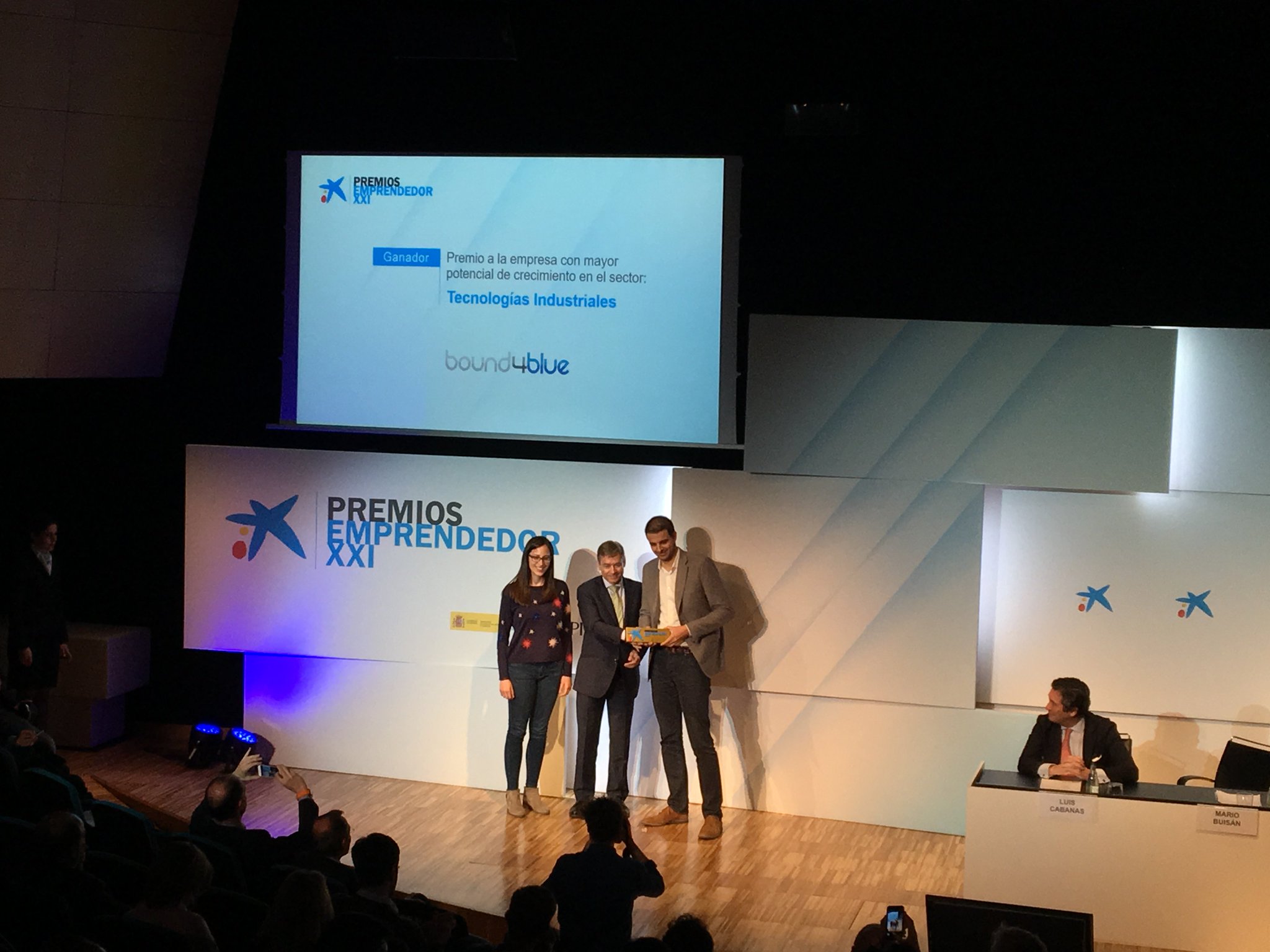
Cristina and José Miguel, CEO and co-founder receiving the EmprendedorXXI Award as the winner in the Industrial Technologies category
Join the Conversation
We’d love to hear what you have to say.
Get in touch with us on Facebook Group and Twitter.
Ecoalf – Because There Is No Planet B
Ecoalf is a Spanish company which turns plastic sea waste into high-quality fashion products.
It was founded in 2010 by Javier Goyeneche after the birth of his son, Alfredo (the ALF in Ecoalf comes from Alfredo). Javier started Ecoalf after he became increasingly frustrated with the excessive use of the world’s natural resources.
Read my interview with Javier Goyeneche: Turning Plastic Sea Waste Into Fashion
Ecoalf is a sustainable fashion brand from A to Z. The company created Sea Yarn, a new 100% recycled filament which is made of the plastic bottle collection found at the bottom of the Mediterranean Sea.
As Javier highlights in our interview, Ecoalf is not about recycling grandma’s old blanket into a backpack; it’s about innovation and design.
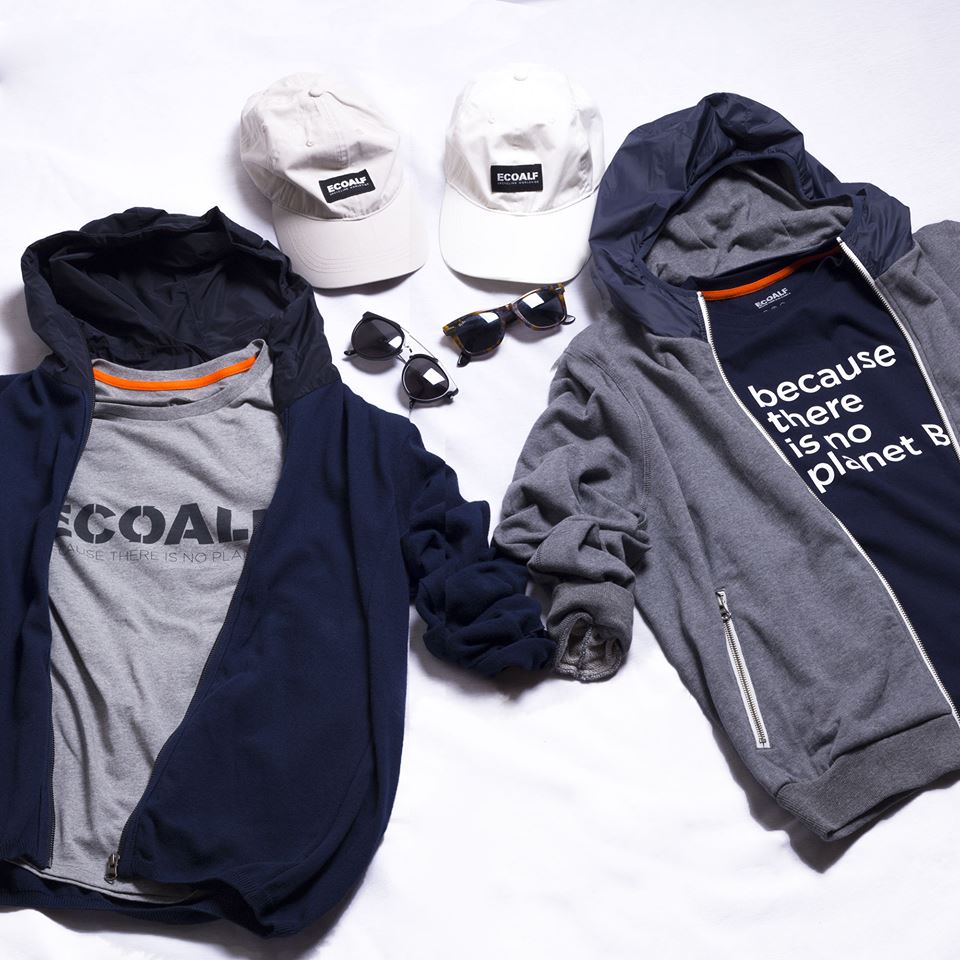
facebook.com
Mission and Vision
Ecoalf’s vision is a world where natural resources are not used in a careless way. Its mission is to create the first generation of recycled products with the same quality and design as the best non-recycled.
The company is founded on three principles: compromise, coherence and transparency. Its DNA is based on sustainability, innovation and sustainable design.
In the majority of processes, Ecoalf uses mechanical recycling – the most sustainable form of recycling.
In terms of energy consumption and CO2 emissions, the production of a recycled material thread has a much lower impact compared with conventional thread.
Here are the parameters which Ecoalf uses when determining a material’s sustainability:
- Energy consumption/CO2 emissions;
- Use of water;
- Use of the ground;
- Use of chemical products;
- Relationship with biodiversity;
- Production of solid residues.
Ecoalf’s designing team creates clothing fashion lines for women, men and children, footwear (flip-flops and sneakers) and accessories (backpack).
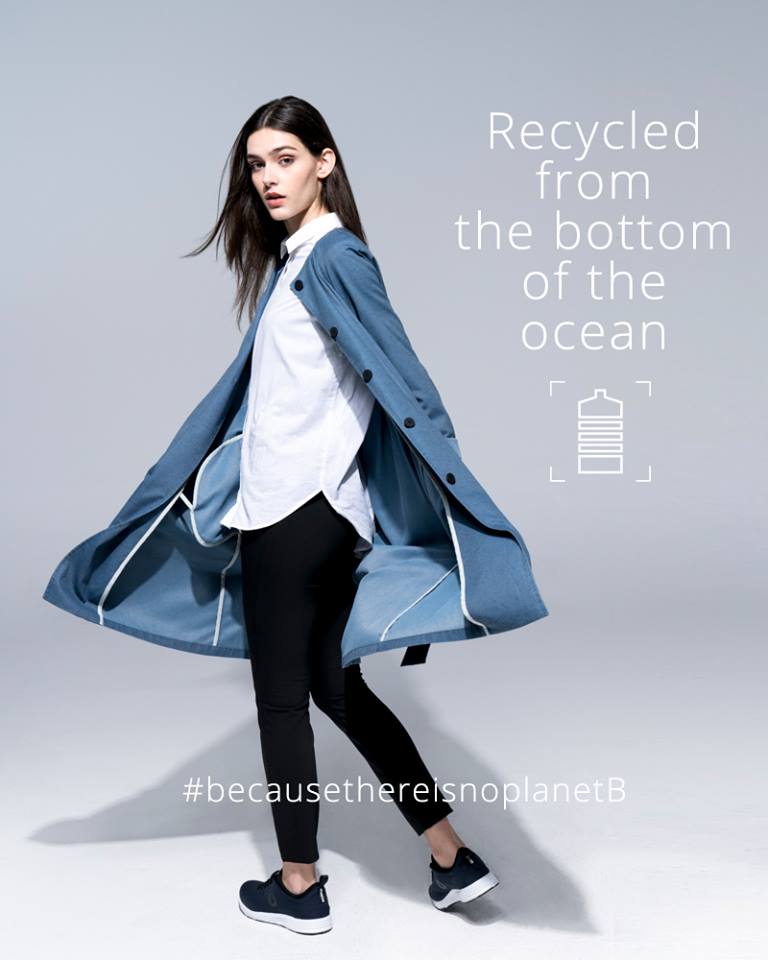
facebook.com
What recycled materials does Ecoalf use to create new products?
- Recycled plastic bottles retrieved from the ocean by fishermen;
- Recycled nylon (fabric scraps, fishing nets from the oceans and carpets);
- Recycled cotton;
- Recycled wool;
- Recycled used tires;
- Post-consumer coffee grounds.
Here are the results of Ecoalf’s innovative recycling process:
- More than 80 million tonnes of plastic bottles recycled so far;
- 135 grams of discarded fishing nets = 1 meter of Ecoalf fabric;
- 1 Ecoalf t-shirt made from recycled cotton saves 2500 litres of water;
- Recycling nets means 27% less consumption of natural resources and a 28% reduction of greenhouse gases emissions;
- Every 1000 kg of Ecoalf fabric reduces the equivalent CO2 emissions of a car driving 9800 km;
- Production of 1000 kg of fabric saves the equivalent of 955 kg of crude oil;
- It took 2 years of research and development to come up with an innovative process by which to turn used tyres into flip-flops as tyres contain metals, antioxidants and fabric pieces.
Partnerships
Ecoalf believes in creation through transformation. The company partnered with major brands that share the same commitment to the Zero Waste philosophy.
Here are some of them:
Starbucks
Starbucks partnered with Ecoalf to create exclusive products made with recycled coffee grounds.
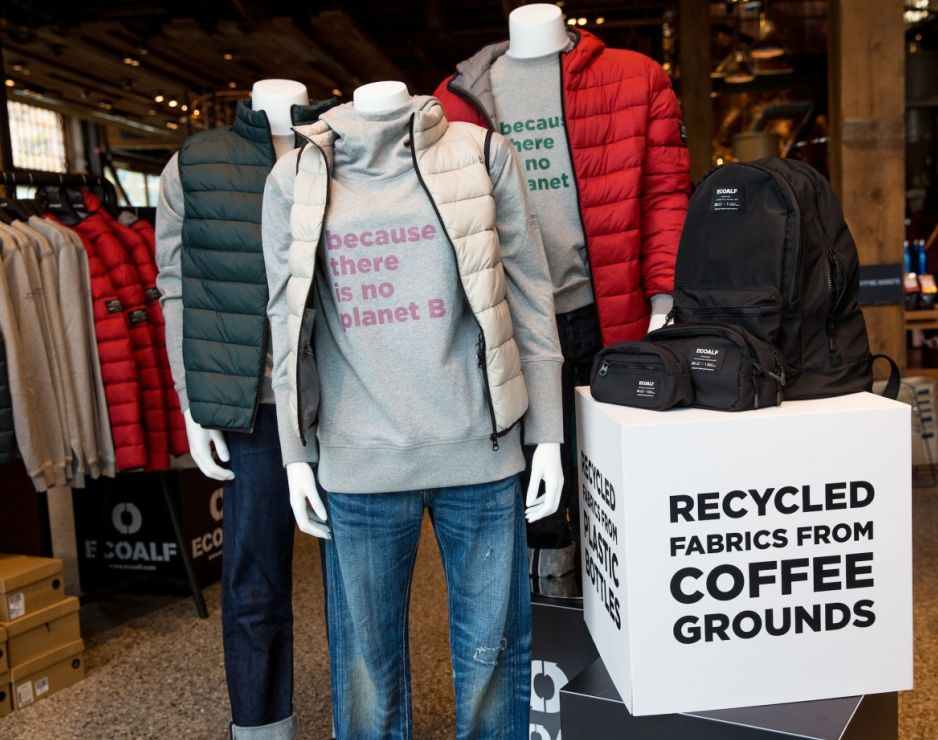
image source: stories.starbucks.com
Swatch
Ecoalf developed an exclusive collection made with 100% recycled fabrics to dress Swatch employees. The company used 40.807 recycled plastic bottles and post-consumer cotton which saved over 30 million litres of water.
will-i-am and Coca-Cola
Ecoalf joined will-i-am and Coca-Cola to launch an exclusive and limited collection of Ekocycle garments made with Ecoalf fabrics at Harrods.
Gwyneth Paltrow
The Spanish company and the famous actress successfully designed a vest and backpack.
Apple
Ecoalf designed for Apple a special collection of stylish and eco-conscious accessories.

ecoalf.com
Awards and Recognition
Ecoalf has received numerous awards and accolades in recognition of its amazing work. Here are some of them:
Recognized by PETA
Ecoalf received the PETA Award for its 100% VEGAN Collection FELDER FELDER.
A Certified B Corporation®
Ecoalf is the first fashion brand in Spain to become a Certified B Corporation. There are 2,441 Certified B Corporations in the world with 1 unifying goal – to redefine success in business. B Corporations inspire all businesses to compete not only to be the best in the world but be the best for the world.
El Confidencial-KPMG Award for the best Initiatives in Eco-efficiency.
Land Rover Award in the category of “Technology and innovation”.
Join the Conversation
We’d love to hear what you have to say.
Get in touch with us on Facebook Group and Twitter.
Best packaging ideas for 2017
In the very competitive and full of inspiration and imagination year such as 2017, a good product is not enough for it to become a brand and capture the consumer’s attention. Let alone make him/ her choose it from the numerous similar products on the shelf and lead to a future buy. Therefore, a great packaging design, in sink with the product’s qualities, characteristics and what it stands for, will mark the path to a successful rise and growth of a brand.
Here are some of this year’s main packaging design trends and ideas:
1. Back to basics. Simple, bold and clear
source: skinn.be
This year, the trend is better articulated and more compelling to the customer. Minimizing the elements used in a package design can elevate a product… as long as it gets the point across. In our fast-paced world, shoppers don’t always have the time to study each and every product detail. Sticking to the essentials and making sure the buyer will make a more informed decision, a clean-cut design can convey information and make a product shine using simplicity.
According to thedieline.com, the designers understood the purpose of the object and the thought process of their audience. In service of this, they simplified the message and stated it clearly and boldly across the face of the packaging. These designs are text-based and say what they are in no uncertain terms. They realize the value of a simple message in today’s crowded world. The simplicity does not come off as lazy or incomplete but refreshing and honest. This is the manifestation of the idea: clarify not simplify. These designs identified exactly what the customer was searching for and expressed it simply. It comes off as powerful and trustworthy.
source: tapped
2. Putting focus on the custom lettering
Almost every designer loves to get crafty and create some of their artwork by hand. According to Martin Lupus of 99designs.com this thing happens in order to get the organic effect: fluid imperfections—like irregular lines or natural texture fills— that can make a product stand out through warmth and set it apart from digital designs. “This warmth can create an emotional tie to the product, making it feel handmade and wholesome, or communicating a feeling of nostalgia. Either way, for 2017, we are seeing a massive comeback of hand-lettering,” added Lupus.
source: sweetyland
3. Letting geometry rule!
source: thedieline
Hand in hand with the previous trend, this theme is centered around expressing simplicity, approachability, and honesty through patterns and shapes. Circles, triangles, and squares are, as the specialists consider, an attempt to treat the mindset of a weary, overwhelmed consumer. Particularly in industries with over-the-top design, these reduced approaches standout. Familiar shapes, colors, and patterns communicate an awareness of the world and a sensitivity to the consumer.
- Old school with a twist
The past is haunting us, but in a good way, through a “idealization of the past—a longing for simpler times when things were cared for, made by hand, and detail-oriented”, as Grant Wenzlau from dieline.com would say. But these designs are not simply regurgitating old forms and techniques, they are modernizing them and combining them in new ways. “This new take on what is old is refreshing because it selects the best parts of different periods of our history and juxtaposes them. These designers realize the increasing rareness of endangered techniques like calligraphy, letterpress, and foiling. These artisanal practices grow more and more desired each year. In the mind of the consumer, they are increasingly novel and related to greater value. But far from merely being historical, these techniques are being re-imagined in the context of mid-century layouts and applied to a 21st Century, cutting-edge materials”.
source: ACH Vegan Chocolate
source: cocktail kit
Moreover, vintage package design brings back memories for people who lived through the original era and satisfies the curiosity of younger generations eager to explore the past. The key to going vintage is to find a balance.
5. Making the color a focus and priority
Colors evoke emotions and affect purchasing decisions. Because of this, color has always been one of the most important choices in packaging design, presenting in new, exciting ways. Bright colors and vibrant associations are beginning to make a scene on store shelves. More than that the colors and their special use are able to differentiate the packaging and the product at the shelf, making it to stand out and attract the consumer that will always choose exciting over common and boring. Also, it is proven that the consumer will always remember a product that is interesting and has the wow visual factor.
source: Pyramida
source: Resonance
6. Be playful and multi-functional!
In each of us lays a child and we love to be given the opportunity to loose ourselves from time to time. So does the consumer. He appreciates a good, interesting packaging that can be joyful, playful and multi-functional.
source: Monstea
7. Repeating a pattern
source: Helmes Workshop
We learn and remember through patterns, as our brain is built that way. Using well-chosen and beautiful patterns can also elevate a package design from ordinary to ethereal. Although the idea of repetitive shapes might seem simple, the technique can be dynamic and compelling when used correctly. Moreover, as it happens in writing a book or a play or a song, repeating a visual motif that captures the essence of the brand sends a strong message. Whether the pattern is bold or playful, patterning the package can create a strong identity that customers will always remember.
8. Storytelling & narrative
source: Smith & We All Need Works
People love stories and, as previously said, having a story behind everything one does it’s always a plus, giving it authenticity and creativity, at the same time. We seek out and cherish the stories that feel closest to our hearts, therefore the packaging design are starting also to incorporate narrative illustrations, trying to get closer to the consumer’s empathies and emotions. The place where the real sale and conviction start.
9. Putting it in the mail
source: Luxembourg
Internationally, there’s a strong comeback for the print and its values, for going to back to the roots, the life before the online. Coffee shops that are inviting their costumers to stop using the wifi and talk to each other, online magazines that are starting to get their first printed versions, people choosing books over kindles, etc. With faster, more efficient ways to communicate, the joy of receiving a letter via the post, in the real mail, not online, has started to disappear over the years. But there is a new trend that will take people back to that feeling. According to the specialists from 99designs.com, the packaging design is here to save the day with an emerging postal trend.
10. Going eco-friendly
The years to come will be more and more about sustainability. According to packaginginnovation.com, the new trends are about using green padding materials, with biodegradable bubble wrap and recycled paper being perfect eco-friendly alternatives. “One of the leaders in sustainable design, method sells bottles made with recycled ocean plastic. From using more renewable resources to keeping materials recyclable, more consumer brands are integrating eco-friendly design into their business. This is a trend that we hope to see grow with each year because it benefits everyone,” also added and concluded Martin Lupus.
source: Grow With Me


